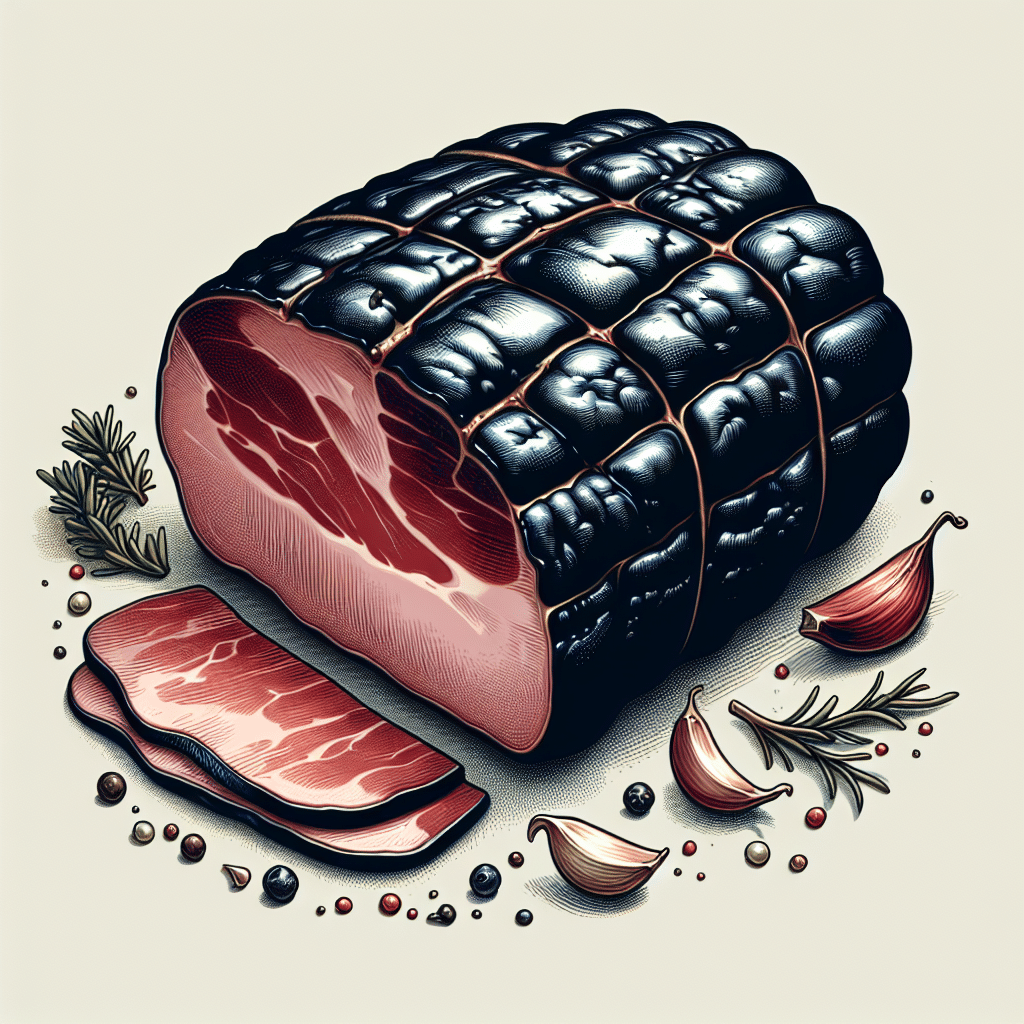Introduction to Black Forest Ham
Black Forest ham is a traditional German delicacy originating from the Black Forest region (Schwarzwald) in southwestern Germany. Known for its distinct flavor, Black Forest ham is made from the hind leg of a pig, which is cured with a mixture of spices, salt, and often ends up being smoked over fir or pine wood. This method of preparation imparts a rich, smoky flavor complemented by a subtle sweetness. The process of creating authentic Black Forest ham includes several stages: curing, seasoning, and smoking, all of which contribute to the final product’s unique taste and texture. It is celebrated for its dark, reddish-brown exterior and smooth, moist interior that makes it a popular choice for various culinary applications, such as sandwiches, salads, and charcuterie boards.
Historical Background
The production of Black Forest ham dates back to as early as the 18th century. It was originally created as a means of preserving meat for long periods, taking advantage of the natural resources available in the Black Forest region. The unique combination of air quality, climate, and locally sourced woods allowed for a special method of smoking, enhancing the flavors of the ham. Over the years, the recipe and methods have evolved, gaining popularity beyond Germany, particularly in the United States and Europe where it is now enjoyed worldwide.
Production Process of Black Forest Ham
Curing
The first step in creating Black Forest ham is curing the meat. Fresh pork hind leg is well-rubbed with a blend of spices, including black pepper, garlic, and sometimes a touch of coriander and nutmeg. Salt is crucial here, not just for flavor but also for preserving the meat and preventing spoilage. The curing process lasts for several weeks, during which the ham absorbs the flavors of the spices and develops its characteristic color.
Smoking
Once cured, the ham is smoked, which is a signature element of Black Forest ham. Authentic varieties are typically smoked over fir or pine wood, which imparts a distinctive flavor that sets it apart from other types of ham. The smoking process can last several weeks, allowing the wood smoke to penetrate deeply into the meat, creating a rich and complex flavor profile.
Aging
After smoking, the ham is aged for additional flavor development. The aging process can take anywhere from several months to over a year. This slow maturation enhances the depth of flavors and helps to further tenderize the meat. The result is a ham that is not only flavorful but has a smooth, velvety texture that melts in your mouth.
Tasting Notes and Culinary Uses
Black Forest ham distinguishes itself with its intense, smoky flavor, balanced by its slight sweetness and tender texture. The exterior is rich with spices, while the interior is moist and savory. This unique taste makes Black Forest ham a versatile ingredient in many dishes:
- Sandwiches: Its rich flavor pairs perfectly with bread, cheese, and various condiments.
- Salads: Slices of Black Forest ham add depth and richness to green salads and pasta salads.
- Charcuterie Boards: Its striking appearance and flavor make it a popular choice for gourmet cheese boards.
- Cooking: It can be used in cooked dishes, providing a smoky depth to soups, stews, and casseroles.
Health Considerations
While Black Forest ham is a delicious addition to various diets, it should be consumed in moderation due to its sodium content from the curing process. A standard serving contains about 300-400 milligrams of sodium, making it essential to balance with lower-sodium foods if you’re watching your salt intake. Additionally, like other cured meats, it is important to consider portion sizes, and it can be included as part of a balanced diet when enjoyed with other wholesome foods.
Frequently Asked Questions
What is the difference between Black Forest ham and other types of ham?
Black Forest ham is characterized by its specific production method, including smoking with fir or pine wood, and its unique blend of spices. Unlike typical country hams or Virginia hams, the process results in a darker exterior and a more profound smoky flavor.
Is Black Forest ham gluten-free?
Yes, traditional Black Forest ham is gluten-free; however, it is always advisable to check for any added flavorings or preservatives that may contain gluten.
How should I store Black Forest ham?
To maintain its freshness, Black Forest ham should be kept refrigerated. Once opened, it should be consumed within a few days to ensure optimal taste. Vacuum-sealed types can often last longer, provided the seal remains intact.
Can Black Forest ham be cooked?
While Black Forest ham is often enjoyed sliced and uncooked, it can also be gently warmed or used as an ingredient in various cooked dishes, such as pasta, soups, or casseroles.
Conclusion
In summary, Black Forest ham is much more than a mere delicacy; it’s a complex product of rich heritage, meticulous production, and distinctive flavors that make it a staple in both German cuisine and global culinary practices. Whether you enjoy it in a sandwich, as part of a gourmet platter, or in cooked dishes, its versatility ensures it will continue to be a beloved choice for food enthusiasts.

